Water conservation is an essential consideration when designing and managing Sonoma and Marin County landscapes. Our area enjoys a Mediterranean climate characterized by wet winters and long, dry summers with little rainfall. Plants that are suited or adapted to local conditions not only use less water but generally grow more successfully and robustly, with fewer insect and disease problems. They ultimately create a healthier, more beautiful and more sustainable landscape.
Below is a hand selected plant list for Sonoma and Marin counties that displays mostly native species that will thrive in our climate. You can search, filter and save specific plants to your plant list and also print plant cards.
-
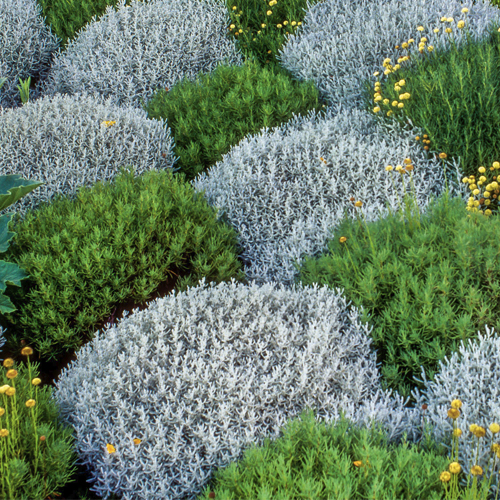
Lavender Cotton
Santolina spp -
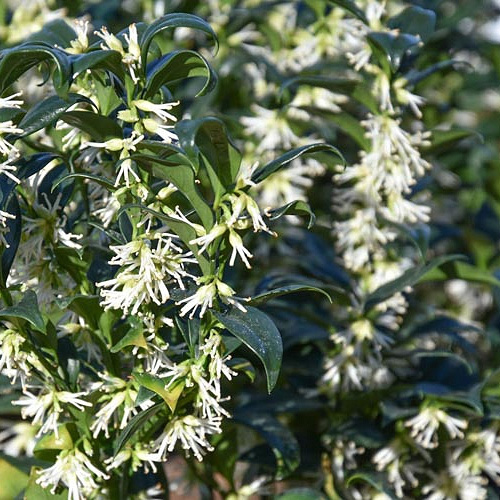
Sweet Box
Sarcococca spp -
California Native
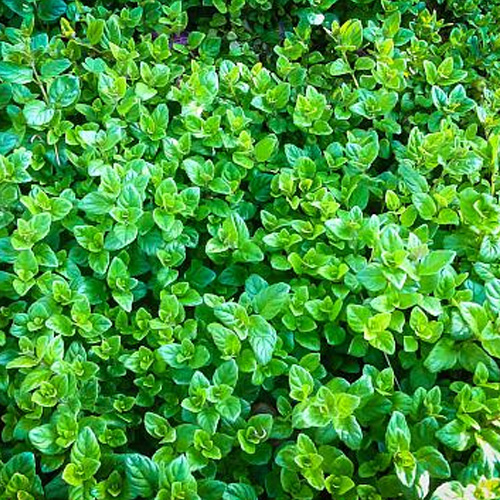
Yerba Buena
Satureja [Clinopodium] douglasii -
California Native
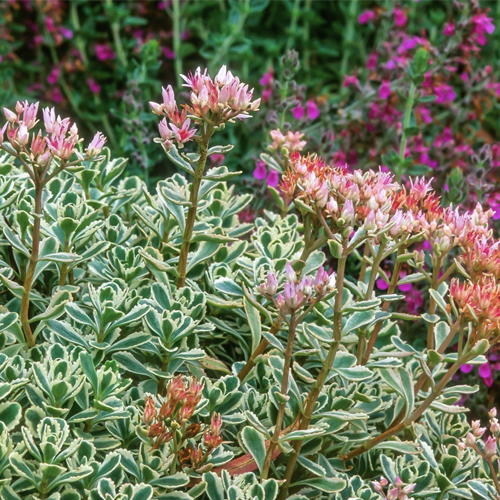
Stonecrop
Sedum spp -
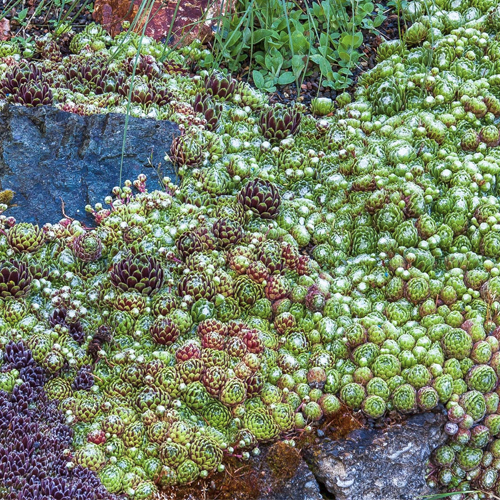
Houseleek
Sempervivum spp -
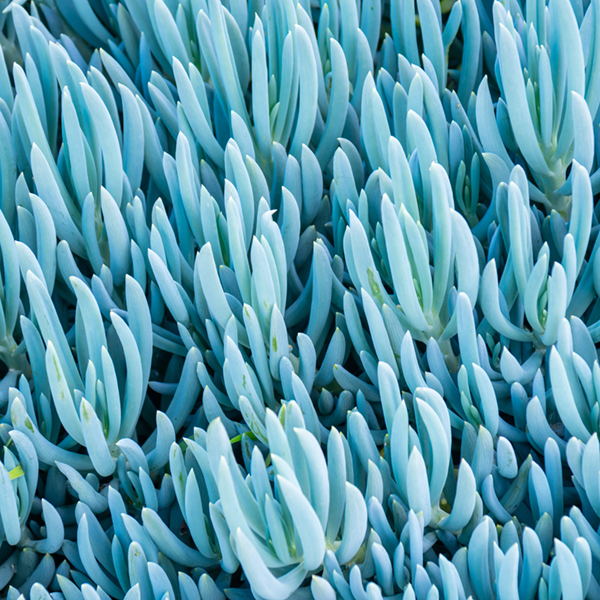
Senecio
Senecio spp -
California Native
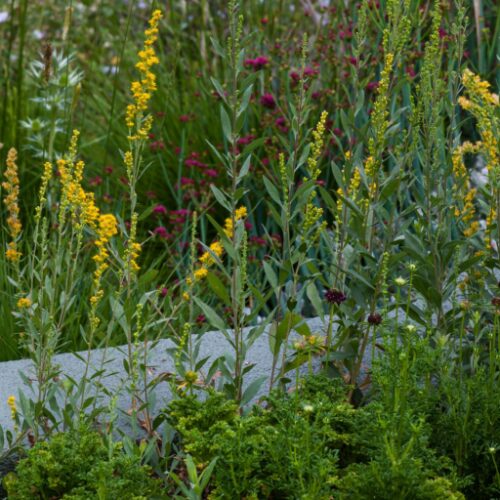
California Goldenrod
Solidago velutina californica -
California Native
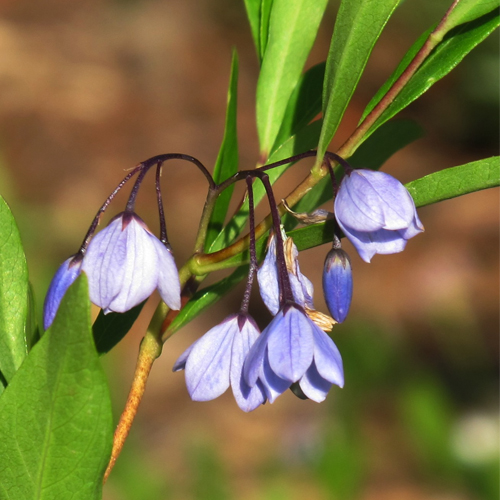
Australian Bluebell Creeper
Sollya heterophylla -
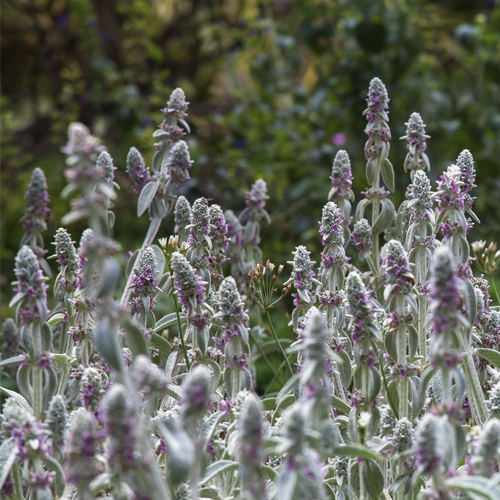
Lamb's Ears
Stachys byzantina -
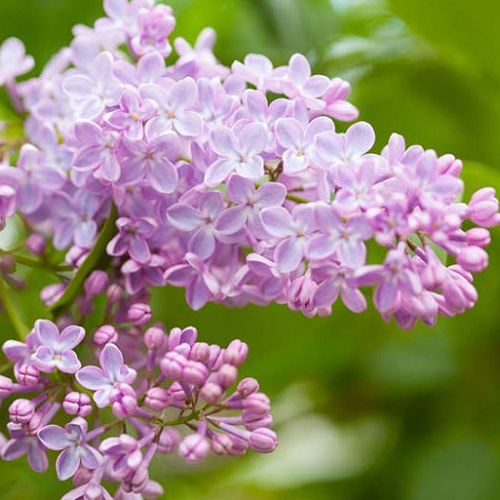
Lilac
Syringa vulgaris -
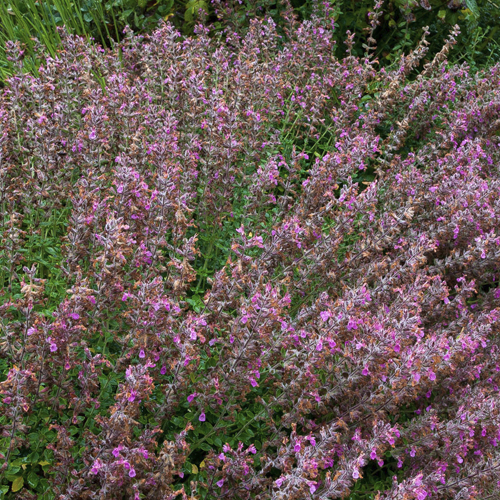
Germander
Teucrium spp -
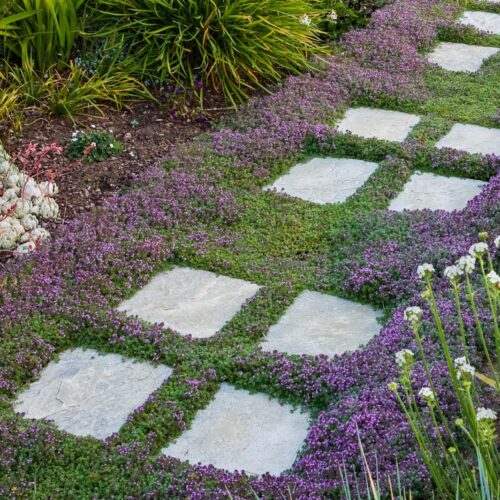
Creeping Thyme
Thymus praecox


Lavender Cotton
Santolina spp
Shrub
Care:

Full Sun

Partial Shade

Low

Well Drained
Look:

Medium
size

Gray
leaves

Silver
leaves

Yellow
flowers
Lavender Cotton
Santolina spp
Shrub
Care:

Full Sun

Partial Shade

Low

Well Drained
Look:

Medium
size

Gray
leaves

Silver
leaves

Yellow
flowers
Small, mounding, aromatic Mediterranean shrubs that flower in summer with small yellow, button-like flowers. Prune in spring after flowering to maintain appearance. Two widely available species are lavender cotton (S. chamaecyparissus, 1-2’ x 2-3’) with gray-green foliage, and S. rosmarinifolia (1-2’ x 2-3’) with green foliage that resembles rosemary.


Sweet Box
Sarcococca spp
Shrub
Care:

Partial Shade

Shade

Low

Loam
Look:

Green
leaves

White
flowers
Sweet Box
Sarcococca spp
Shrub
Care:

Partial Shade

Shade

Low

Loam
Look:

Green
leaves

White
flowers
Shade-loving, low maintenance, evergreen shrub with glossy green leaves from the Himalayas and China. Small, fragrant, white flowers in late winter and early spring are followed by blue-black or red berries. S. hookerana humilis (1-2’ x 4-8’) is a low-growing form that spreads by underground runners. S. ruscifolia (4-6’ x 3-7’) is an upright shrub form.


Yerba Buena
Satureja [Clinopodium] douglasii
CA Native, Ground Cover
Care:

Full Sun

Partial Shade

Low

Most Soils
Look:

Green
leaves

Lavender
flowers
Yerba Buena
Satureja [Clinopodium] douglasii
CA Native, Ground Cover
Care:

Full Sun

Partial Shade

Low

Most Soils
Look:

Green
leaves

Lavender
flowers
Yerba buena is Spanish for “good herb” due to its medicinal qualities as a tea. This trailing herbaceous perennial has a minty fragrance and is native from British Columbia to Los Angeles County. Prefers a woodland setting with light shade and well-drained soil.


Stonecrop
Sedum spp
CA Native, Shrub
Care:

Full Sun

Partial Shade

Low

Well Drained
Look:

Small
size

Bronze
leaves

Green
leaves

Reddish
leaves

Pink
flowers

Red
flowers

White
flowers

Yellow
flowers
Stonecrop
Sedum spp
CA Native, Shrub
Care:

Full Sun

Partial Shade

Low

Well Drained
Look:

Small
size

Bronze
leaves

Green
leaves

Reddish
leaves

Pink
flowers

Red
flowers

White
flowers

Yellow
flowers
Large group of succulent plants that vary considerably in appearance and cold tolerance. Sedums can provide variety in texture among other plants and also work well in containers.
Examples:
- S. ruprestre ‘Angelina’ has brilliant chartreuse-yellow, needle-like foliage that turns rust- red in winter to form a striking groundcover.
- S. spathulifolium is a mat-forming, evergreen perennial native to California’s coast ranges and Sierra Nevada to British Columbia. Yellow, star-like flowers appear in late spring and early summer. S. s. ‘Cape Blanco’ has chalky-white foliage and S. s. ‘Purpureum’ has purple foliage.
- S. spurium is a ground-hugging succulent with trailing stems and small dark green, bronzy leaves about an inch long, and bears pink, white, or purple flowers in dome-shaped clusters in mid-summer. S. s. ‘Dragon’s Blood’ has red-margined, green leaves that become brilliantly red with cool autumn temperatures. S. s. ‘Bronze Carpet’ bears rich bronze-red foliage with pink flowers. S. s. ‘Tricolor’ leaves are variegated in green, creamy white, and pink.
- S. telephium ‘Autumn Joy’ (2’ x 2’) is a popular and robust hybrid with bright green leaves and clusters of pink flowers in summer that turn rusty brown in autumn. It dies back in winter and reemerges in spring.


Houseleek
Sempervivum spp
Succulent
Care:

Full Sun

Partial Shade

Low

Well Drained
Look:

Gray Green
leaves

Green
leaves

Pink
flowers

Red
flowers

White
flowers

Yellow
flowers
Houseleek
Sempervivum spp
Succulent
Care:

Full Sun

Partial Shade

Low

Well Drained
Look:

Gray Green
leaves

Green
leaves

Pink
flowers

Red
flowers

White
flowers

Yellow
flowers
Small, hardy alpines form rosettes of tightly packed, pointed leaves that come in a wide variety of forms colors and textures. All spread by offsets that cluster around the parent. Small, star-shaped flowers on fleshy stems in the summer. Rosettes die after flowering, but offsets live on.
Examples:
- Cobweb houseleek (S. arachnoideum, 3” and spreading) has web-like hairs on leaves.
- Hens and chicks (S. tectorum, 4-12” and spreading) are available in many cultivars.


Senecio
Senecio spp
Succulent
Care:

Full Sun

Partial Shade

Low

Well Drained
Look:

Blue Gray
leaves
Senecio
Senecio spp
Succulent
Care:

Full Sun

Partial Shade

Low

Well Drained
Look:

Blue Gray
leaves
Just a few plants from this vast group of plants are widely available in nurseries in California.
Examples:
- Dusty miller (S. cineraria, 2-3’ x 2-3’) is a Mediterranean perennial with white-gray leaves that produces clusters of cream or yellow flowers throughout the year.
- Blue chalksticks (S. mandraliscae, 1-2’ x 2-3’) is a spreading succulent from South Africa with fleshy, finger-like leaves up to 6” long.
- Blue Chalksticks (S. serpens, 6” x 1’) is similar to S. mandraliscae but is smaller and has shorter leaves of up to 2”.


California Goldenrod
Solidago velutina californica
CA Native
Care:

Full Sun

Partial Shade

Moderate

Most Soils
Look:

Small
size

Gray Green
leaves

Yellow
flowers
California Goldenrod
Solidago velutina californica
CA Native
Care:

Full Sun

Partial Shade

Moderate

Most Soils
Look:

Small
size

Gray Green
leaves

Yellow
flowers
California native perennial herb with oval shaped, gray-green leaves. Yellow flowers will appear in the summer and early fall. Natural habitat for birds and pollinating insects and tolerates a wide variety of soils.


Australian Bluebell Creeper
Sollya heterophylla
CA Native, Ground Cover, Shrub
Care:

Partial Shade

Shade

Low

Well Drained
Look:

Green - Dark
leaves

Blue
flowers
Australian Bluebell Creeper
Sollya heterophylla
CA Native, Ground Cover, Shrub
Care:

Partial Shade

Shade

Low

Well Drained
Look:

Green - Dark
leaves

Blue
flowers
Evergreen shrub or vine from Australia with glossy green leaves and clusters of small, bell-shaped, blue flowers in summer. Can be grown as a low-growing shrub or trained onto a support. Requires good drainage but will grow with full sun or some shade.


Lamb's Ears
Stachys byzantina
Care:

Full Sun

Partial Shade

Low

Well Drained
Look:

Purple
flowers
Lamb's Ears
Stachys byzantina
Care:

Full Sun

Partial Shade

Low

Well Drained
Look:

Purple
flowers
This native of Turkey, Armenia, and Iran has been grown in California gardens for many years due to its soft gray leaves. The low-growing form provides a great groundcover at the front of a border or along a pathway. Flower stalks in late spring and early summer provide additional interest with small, purple flowers. S. b. ‘Helen von Stein’ is notable for its larger leaves.


Lilac
Syringa vulgaris
Shrub
Care:

Full Sun

Partial Shade

Low

Well Drained
Look:

Green
leaves

Lavender
flowers

Pink
flowers

Yellow
flowers
Lilac
Syringa vulgaris
Shrub
Care:

Full Sun

Partial Shade

Low

Well Drained
Look:

Green
leaves

Lavender
flowers

Pink
flowers

Yellow
flowers
Syringa vulgaris is the best known and most drought-tolerant of the lilac species. This deciduous shrub from eastern Europe produces a spectacular display of pinkish or bluish flowers in clusters 10” or longer. Prune suckers as they develop. Lilacs generally bloom best with chilly winters.


Germander
Teucrium spp
Ground Cover, Shrub
Care:

Full Sun

Very Low

Low

Well Drained
Look:

Small
size

Green
leaves

Silver
leaves

Lavender
flowers

Purple
flowers
Germander
Teucrium spp
Ground Cover, Shrub
Care:

Full Sun

Very Low

Low

Well Drained
Look:

Small
size

Green
leaves

Silver
leaves

Lavender
flowers

Purple
flowers
Mediterranean, flowering, shrubby perennials with aromatic foliage.
- Wall germander (T. chamaedrys [x lucidrys], 1’ x 2’) is a popular groundcover with upright stems, dark green leaves, and red-purple or white flowers in summer.
- Majorcan germander (T. cossonii [majoricum], 6” x 2’) is a creeping perennial that produces a profusion of rosy purple flowers in mid-to-late spring.
- Bush germander (T. fruticans, 4-8’ x 4-8’) has silvery foliage and bears lavender-blue flower spikes from winter to spring and sporadically throughout the year.


Creeping Thyme
Thymus praecox
Ground Cover
Care:

Full Sun

Partial Shade

Low

Well Drained
Look:

Small
size

Gray Green
leaves

Pink
flowers

Purple
flowers
Creeping Thyme
Thymus praecox
Ground Cover
Care:

Full Sun

Partial Shade

Low

Well Drained
Look:

Small
size

Gray Green
leaves

Pink
flowers

Purple
flowers
Creeping thyme grows 2-3 inches tall and spreads 1-3 feet wide and can withstand foot traffic, making it an excellent choice for a walkable groundcover or turf alternative. It has fragrant pinkish-purplish tubular flowers which bloom in the summer. It requires well-drained, preferably sandy or rocky soil.
 Print this plant card
Print this plant card